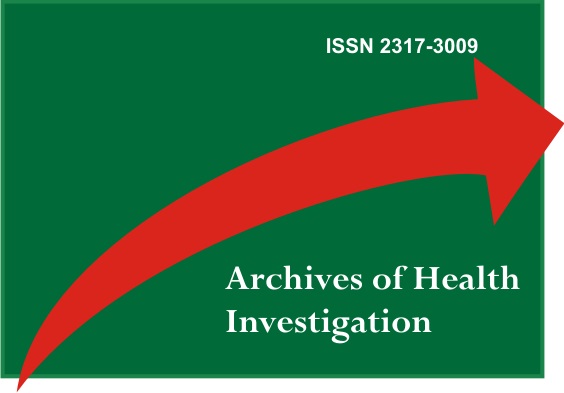Surface Roughness and Microhardness of Composite Resin Reinforced by Titanium Nanotubes: Review of Applications Using Hydrothermal Method
DOI:
https://doi.org/10.21270/archi.v12i3.6117Keywords:
Composite Resins, Surface Properties, NanotubesAbstract
Composite resins differ in their inorganic components in terms of particle type, size and weight percentage depending on the composite. Larger particles are often associated with significant detachment from the matrix and, therefore, greater porosity of the restoration. Recently, the introduction of nanometer-sized particles in hybrid composites has allowed combining mechanical characteristics with an easier polishing procedure, resulting in lower surface roughness. It is known that the oral environment is the main responsible for the chemical degradation of composite resins, not only by the acids formed by the biofilm, which enhance the hydrolysis of the material with consequent alteration of the surface texture, but also by the forces of abrasion and compression, in addition to of the thermal alterations, responsible for the aging of the material. In such a steep and challenging environment, enhanced by the difference in hardness between the inorganic particles and the resin matrix, the surface smoothness of the composite resins, obtained immediately after finishing and polishing the restoration made, undergoes changes. A strategy to improve the properties of composite resins is the use of nanotechnology due to its potential to significantly modify the properties of the polymeric matrix. Titanium nanoparticles have some desirable properties such as: biocompatibility, stability in the oral environment, antimicrobial activity and can even increase the resistance of the material to masticatory efforts. The literature has suggested its incorporation into dental materials with the aim of assisting in the decontamination of materials used in the manufacture of restorations, thus contributing to infection control. Based on these considerations, the purpose of this work is to review the surface behavior of resins reinforced by titanium nanotubes obtained by the hydrothermal method.
Downloads
References
Ferracane JL. Current trends in dental composites. Crit Rev Oral Biol Med. 1995;6(4):302-18.
Alzraikat H, Burrow MF, Maghaireh GA, Taha NA. Nanofilled Resin Composite Properties and Clinical Performance: A Review. Oper Dent. 2018;43(4):E173-90
Lin GSS, Ghani NRNA, Ismail NH, Singbal K, Noorani TY, Mamat N. New Experimental Zirconia-Reinforced Rice Husk Nanohybrid Composite and the Outcome of Its Surface Roughness and Microhardness in Comparison with Commercialized Nanofilled and Microhybrid Composite Resins. Contemp Clin Dent. 2021;12(1):21-7.
Santos MCB, Alves Rezende MCR, Limírio JPJO, Lisboa Filho PN. Influência de enxaguatórios bucais na rugosidade superficial e microdureza de uma resina composta reforçada por nanotubos de titânio. In: Anais do XXXI Congresso de Iniciação Científica da UNESP. Anais. São Paulo (SP). 2019.
Roy P, Berger S, Schmuki P. TiO2 nanotubes: synthesis and applications. Angew Chem Int Ed Engl. 2011;50(13):2904-39.
Ocampo RA, Echeverria FE. Antibacterial and Biological Behavior of TiO2 Nanotubes Produced by Anodizing Technique. Crit Rev Biomed Eng. 2021;49(1):51-65.
Kasuga T, Hiramatsu M, Hoson A, Sekino T, Niihara K. Formation of Titanium Oxide Nanotube. Langmuir. 1998;14(4):3160-63.
Trota Filho J. Síntese de nanotubos de óxido de titânio para aplicações fotocatalíticas [tese]. Rio de Janeiro: Universidade Federal do Rio de Janeiro; 2013.
Lima FMP. Síntese e caracterização de nanotubos de óxido de titânio pelo método hidrotérmico [monografia]. Curitiba – PR: Universidade Tecnológica Federal do Paraná (UTFP) Departamento Acadêmico de Química e Biologia. Bacharelado em Química Tecnológica; 2016.
Ou HH, Lo SL. Review of titania nanotubes synthesized via the hydrothermal treatment: fabrication, modification, and application. Sep Purif Technol. 2007;58:179-91
Wang W, Varghese OK, Paulose M, Grimes CA, Wang O, Dickey EC. A study on the growth and structure of titania nanotubes. J Mater Res. 2004;19:417-22.
Marques BF, Alves Rezende MCR, Limírio JPJO, Lisboa-Filho PN. Efeito do peróxido de carbamida 15%, peróxido de hidrogênio 40% e do envelhecimento na rugosidade superficial e microdureza. In: Anais do XXXIV Congresso de Iniciação Científica da UNESP. Anais. São Paulo (SP). 2022.
Marques BF, Alves Rezende MCR, Limírio JPJO, Lisboa-Filho PN. Resina composta reforçada por nanotubos de titânio: influência de diferentes bebidas e envelhecimento na rugosidade superficial e microdureza. In: Anais do XXXIII Congresso de Iniciação Científica da UNESP. Anais. São Paulo (SP). 2021.
Guimarães GMF, Bronze-Uhle ES, Lisboa-Filho PN, Fugolin APP, Borges AFS, Gonzaga CC et al. Effect of the addition of functionalized TiO2 nanotubes and nanoparticles on properties of experimental resin composites. Dent Mater. 2020;36(12):1544-56.
Stürmer M, Garcia IM, Souza VS, Visioli F, Scholten JD, Samuel SMW et al. Titanium dioxide nanotubes with triazine-methacrylate monomer to improve physicochemical and biological properties of adhesives. Dent Mater. 2021;37(2):223-35.
Oliveira IS, Marques VF, Casselli DSM. Avaliação da microdureza e da rugosidade de compósitos resinosos de uso direto e indireto. RFO UPF. 2015;20(1):28-38.
Oberholzer TG, Du Preez IC, Kidd M. Effect of LED curing on the microleakage, shear bond strength and surface hardness of a resin-based composite restoration. Biomaterials 2005;26(18):3981-6.
Peris AR, Mitsui FHO, Amaral CM, Ambrosano GMB, Pimenta LA. The effect of composite type on microhardness RFO, Passo Fundo, v. 20, n. 1, p. 28-33, jan./abr. 2015 33 when using quartz-tungsten-halogen (QTH) or LED lights. Oper Dent 2005;30(5):649-54.
Goto K, Tamura J, Shinzato S, Fujibayashi S, Hashimoto M, Kawashita M et al. Bioactive bone cements containing nano-sized titania particles for use as bone substitutes. Biomaterials. 2005;26(33):6496-505.
Karaca MK, Kam Hepdeniz O, Esencan Turkaslan B, Gurdal O. The effect of functionalized titanium dioxide nanotube reinforcement on the water sorption and water solubility properties of flowable bulk-fill composite resins. Odontology. 2022;110(2):313-28.
Dafar MO, Grol MW, Canham PB, Dixon SJ, Rizkalla AS. Reinforcement of flowable dental composites with titanium dioxide nanotubes. Dent Mater. 2016;32(6):817-26.
Ramos-Tonello CM, Lisboa-Filho PN, Arruda LB, Tokuhara CK, Oliveira RC, Furuse AY et al. Titanium dioxide nanotubes addition to self-adhesive resin cement: Effect on physical and biological properties. Dent Mater. 2017;33(7):866-75.


